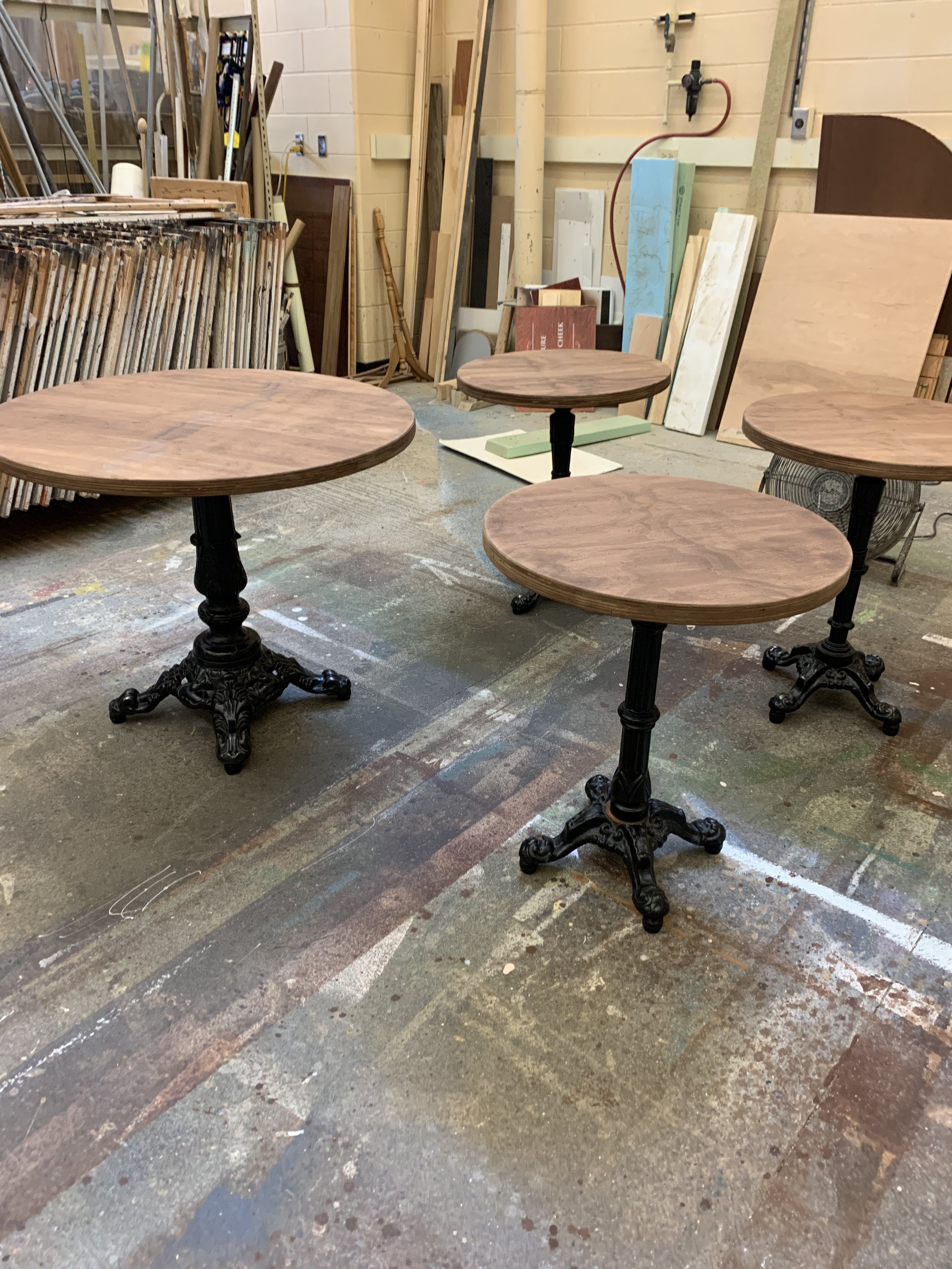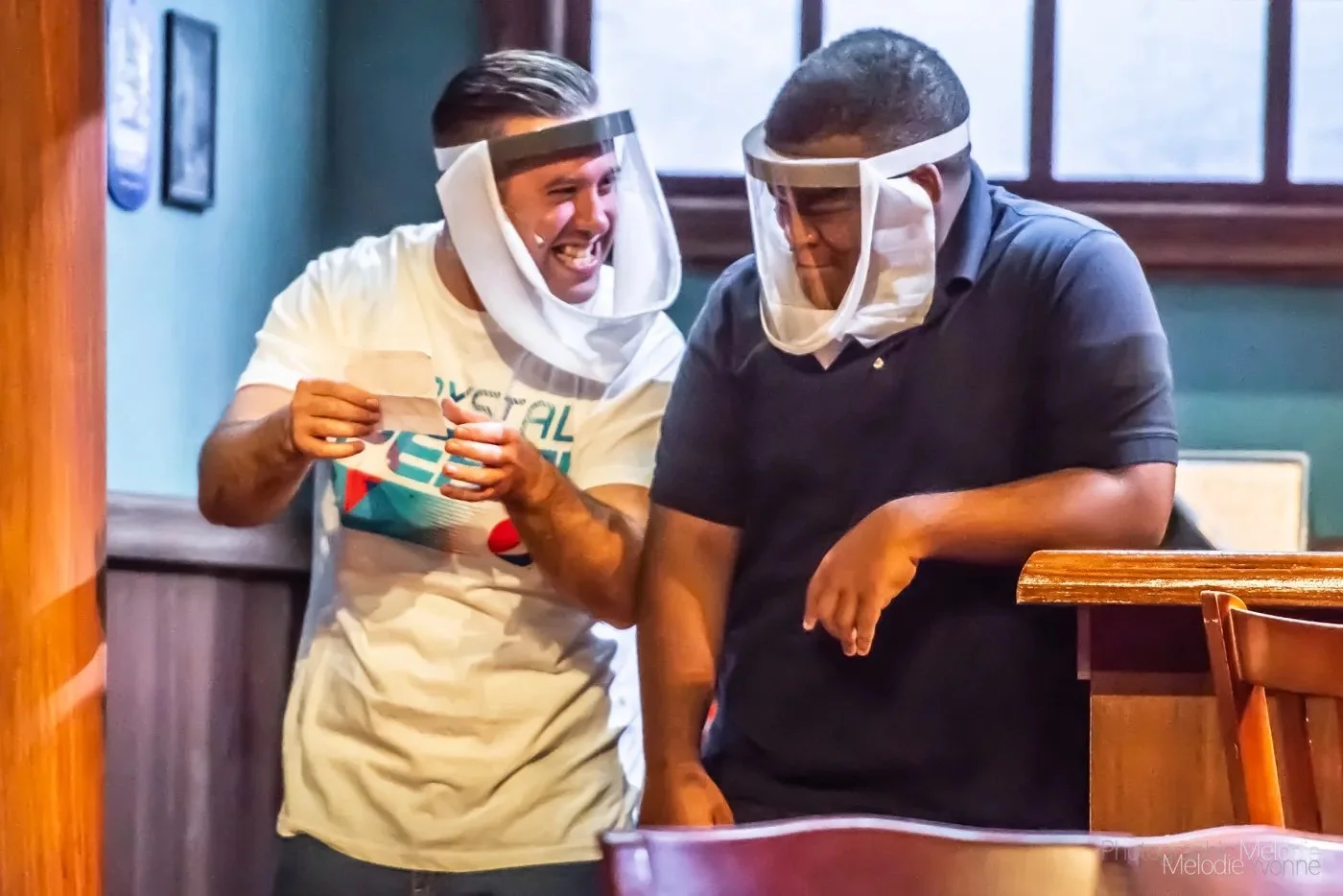Sweat
By Lynn Nottage
Purdue University
Directed by William P. Caise
September 2021
Scenic Design by Rusty Jones
Properties Supervision provided by Jake Wood
Stage Management led by Dr. William W. Lewis
Lynn Nottage’s Sweat was not only the first production I would work on at Purdue, but also the first theatrical venture I would undertake in almost two years. I had the advantage of the show being fully designed by the time I arrived, and was fortunate enough to have the Scenic Designer, Rusty Jones, as an area head and mentor who helped guide me through the properties process at Purdue. With the props list already prepared and rentals already sorted out, I was able to focus my time and energy on learning the show, the space, and the various responsibilities that came with the title of Head of Properties. In addition to acquiring all the necessary props and set dressing for the show, I also had to work around various Covid-19 prevention policies and protocols- in other words, creating a realistic bar where no one could actually consume any food or drink onstage. Despite this challenge, my associates and I were able to achieve the necessary atmosphere of an old, local pub, and gave the actors a proper space to work and create.
Rental Inventory from Greyhouse Coffee
Replacement Tabletops for Greyhouse Tables
Since the rented tables from Greyhouse Coffee did not match the darker wood tones of the rest of the bar, and we couldn’t change their color, we decided to cut out false tabletops out of plywood and paint them to match the rest of the set. I measured the sizes of the rented tables, then drew them out in Vectorworks. I also drew out eight crescent-shaped pieces that would be glued and stapled in two layers around the edge of the circles, to give the illusion of thick, solid wood. These files were uploaded to the CNC router and cut out over the course of a morning, and then sanded and assembled the next day. Working with the scenic artist, I used the same wood-graining process that had been done to other parts of the set, like the bar and booths, to make them match. Finally, they were sealed with a semi-gloss finish, and then scuffed with sandpaper and screwdrivers to appear old and worn rather than brand new. The original tabletops were unscrewed and put into storage for the run of the show, and the new ones were attached to the cast-iron table bases and placed onstage.
































